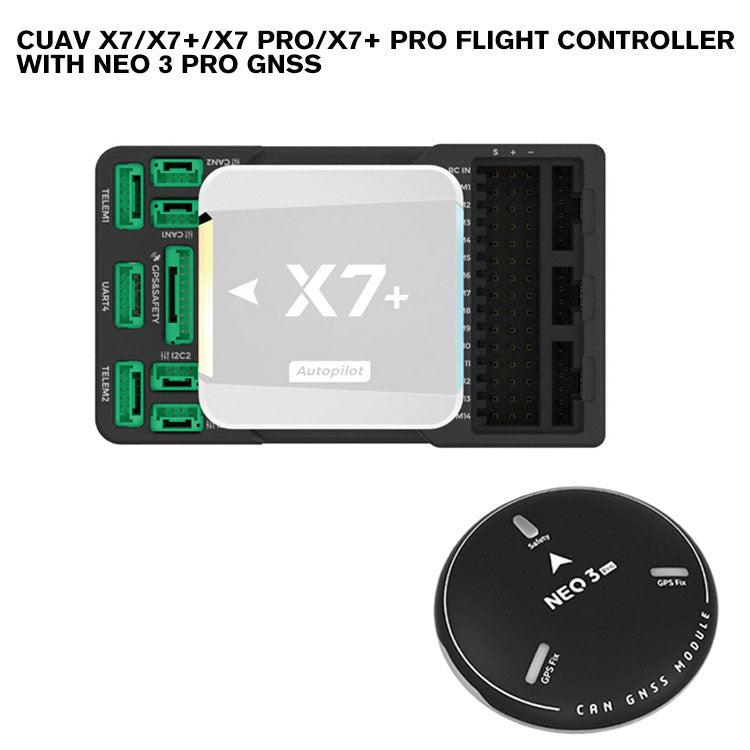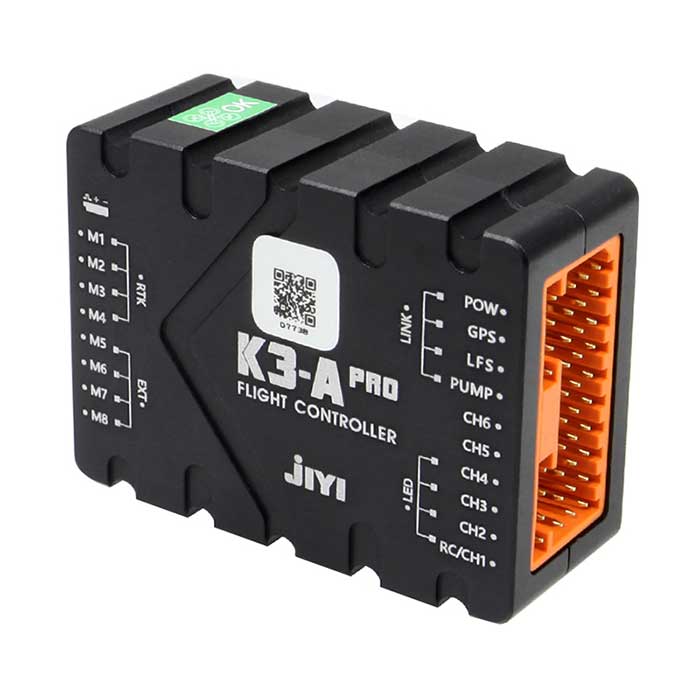Unrivaled Accuracy: SparkNavi Drone Flight Controller and GNSS/INS Made in Taiwan
Unrivaled Accuracy: SparkNavi Drone Flight Controller and GNSS/INS Made in Taiwan
Blog Article
Discovering the Role of Drone Flight Controllers in Enhancing Flight Security and Navigation Efficiency
The improvement of drone innovation has considerably enhanced the significance of trip controllers, which act as the mind of these airborne lorries. By integrating real-time information from a selection of sensing units, flight controllers enhance flight stability and navigation effectiveness, making sure that drones can operate efficiently also in intricate atmospheres. This conversation will certainly check out the essential elements that contribute to these renovations, along with the implications for the future of autonomous trip. What innovations lie ahead that could better change the capabilities of drone trip controllers?

Recognizing Trip Controllers
Trip controllers are essential elements in the functioning of drones, offering as the brains that manage and stabilize trip operations. These innovative devices process information from various sensors, including accelerometers, gyroscopes, and GPS, to guarantee that the drone keeps its desired flight path. The trip controller interprets this data and performs commands based upon pre-defined formulas, allowing the drone to reply to environmental adjustments, such as wind or challenges.
The key function of a trip controller is to preserve stability during flight. It attains this by making real-time changes to the drone's electric motors and control surface areas, making sure equilibrium and control. Furthermore, contemporary trip controllers include innovative attributes such as waypoint navigation, enabling automated flight courses and boosted operational efficiency.
Recognizing the design of flight controllers is crucial for both enthusiasts and specialists. As innovation advancements, flight controllers have become much more compact and qualified, integrating man-made intelligence to improve decision-making processes and adapt to intricate trip circumstances.
Secret Parts of Trip Security
Attaining optimal flight security in drones relies upon a number of essential parts that operate in concert to guarantee smooth and controlled operations. Central to this stability is the flight controller itself, which refines information from different sensing units to maintain the wanted trip perspective. This consists of accelerometers and gyroscopes that determine activity and alignment, enabling for real-time modifications to the drone's setting.
Another vital part is the digital rate controllers (ESCs), which control the power supplied to the electric motors. By carefully adjusting motor speeds in response to trip controller commands, ESCs help maintain balance and combat disturbances brought on by wind or sudden activities.
Additionally, the style of the drone's framework plays a crucial role in trip security. A well-structured frame lessens vibrations and boosts the total aerodynamic profile, adding to smoother flight features. The combination of sophisticated formulas within the trip controller aids in predictive modifications, ensuring a responsive and versatile trip experience.
With each other, these components create a natural system that boosts a drone's stability, enabling for precise maneuvering and enhanced performance in different flight problems.
Navigation Effectiveness Methods
Effectiveness in navigating is vital for optimizing drone operations, especially in complicated atmospheres. Effective navigation methods improve the ability of drones to pass through challenging surfaces and stay clear of barriers, thereby boosting functional efficiency and safety.
One prominent method is the implementation of innovative GPS and inertial measurement systems (IMUs) that supply specific area monitoring and alignment data. These innovations enable drones to compute ideal flight paths in real-time, thinking about different variables such as wind conditions and possible barriers.
Another technique includes using algorithms for course preparation and optimization. Formulas such as A * and Dijkstra's algorithm can be deployed to determine the most effective route while minimizing power usage and trip time. Incorporating equipment knowing models can enable drones to adaptively discover from their atmospheres, improving navigation abilities via experience.

Effect On Autonomous Drones
The integration of sophisticated navigating techniques has actually profoundly transformed the capabilities of independent drones, enabling them to operate with better autonomy and precision. SparkNavi drone flight controller and GNSS/INS made in taiwan. These improvements are largely credited to innovative flight controllers that use real-time data handling and sensor blend, allowing drones to browse intricate settings perfectly
The effect on self-governing drones extends beyond simple navigating; it encompasses improved barrier evasion, boosted security throughout dynamic conditions, and boosted objective dependability. By leveraging formulas that incorporate artificial intelligence and expert system, drones can adjust to altering situations, making notified decisions that maximize their flight paths while minimizing risks.
Moreover, the execution of durable trip controllers has actually helped with the implementation of intricate jobs, such as airborne inspections, distribution solutions, and agricultural tracking, with minimal human treatment. This ability not just enhances procedures but also minimizes human mistake, therefore boosting general safety and security.
Therefore, the operational extent of independent drones has actually broadened substantially, making them crucial tools in different markets. Their ability to perform effectively in diverse circumstances emphasizes the essential duty that advanced trip controllers play in shaping the future of unmanned aerial systems.
Future Fads in Flight Control
Frequently, advancements in trip control innovation are positioned to redefine the landscape of drone operations in the coming years. Arising patterns suggest a significant change towards improved fabricated intelligence (AI) integration, making it possible for trip controllers to process real-time information more successfully. This advancement will certainly help with enhanced decision-making capacities, permitting drones to adjust to vibrant environmental problems autonomously.
Additionally, the implementation of artificial intelligence formulas is expected to improve predictive maintenance, thus minimizing downtime and prolonging the lifecycle of drone components. This positive method to maintenance will be important as drone applications increase across various markets, from farming to logistics.

.jpg)
Finally, improvements in protected communication protocols will certainly resolve safety and regulatory concerns, making sure that drones can run flawlessly in congested airspaces (SparkNavi drone flight controller and GNSS/INS made in taiwan). Jointly, these patterns aim towards a future where trip control systems are not only smarter and more efficient yet additionally qualified of running securely in an increasingly incorporated airspace
Conclusion
Finally, drone flight controllers are essential to boosting trip security and navigating efficiency with the advanced processing of sensor information. By keeping optimum flight perspectives and utilizing innovative formulas for path optimization and obstacle avoidance, these controllers substantially add to the freedom and operational safety and see this site security of drones. As modern technology proceeds to develop, better developments in trip control systems are anticipated, promising better performance and increased capacities in the world of unmanned airborne lorries.
By integrating real-time data from a range of sensors, trip controllers improve flight security and navigation effectiveness, ensuring that drones can run efficiently also in complicated settings.Flight controllers are integral components in the performance of drones, serving as the minds that support and take care of trip procedures. In addition, contemporary flight controllers include advanced features such as click for info waypoint navigating, allowing for automated trip courses and enhanced functional effectiveness.
Central to this stability is the trip controller itself, which refines information from different sensors to preserve the wanted trip perspective.In final thought, drone flight controllers are essential to enhancing flight security and navigating effectiveness with the advanced processing of sensor information.
Report this page